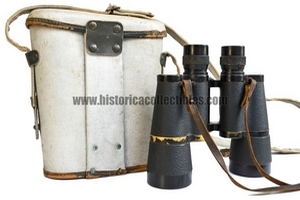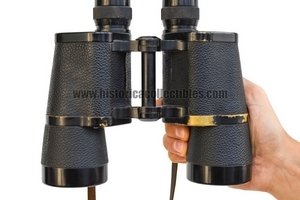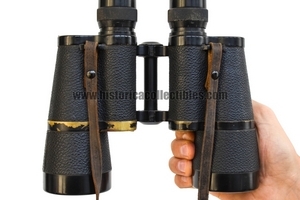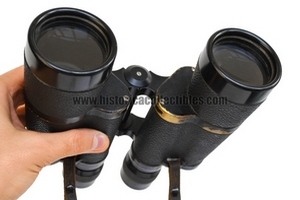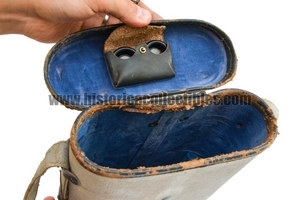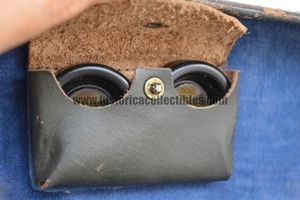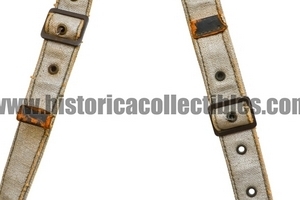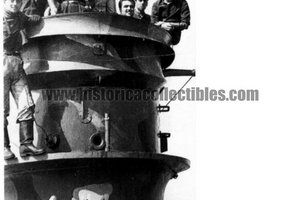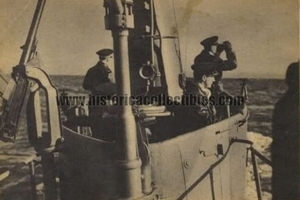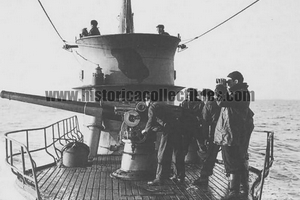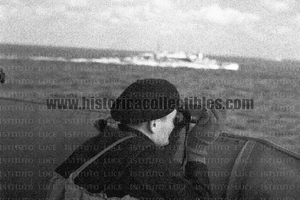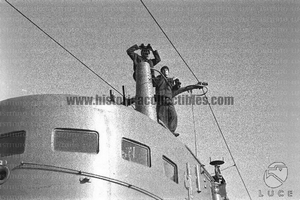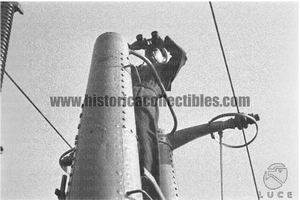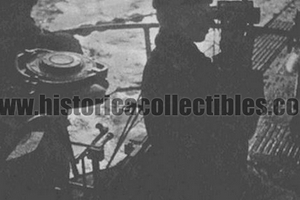Binoculars 7x50 Koristka R.M.I. - Submarine Commander, Royal Italian Navy, circa 1939
7x50 binoculars produced by the F.lli Koristka company in Milan (Italy), for the Royal Italian Navy, dating back to the year of production 1939.
The full name of the manufacturer "Koristka Brothers" and the magnifications "7x50" are engraved on the left eyepiece plate. While on the right eyepiece plate, in addition to the well-known Koristka logo (a double "K" and the central "triangle"), the writing R.M.I - Smg. - which stands for abbreviation, Regia Marina Italiana - Submarines - therefore this specific model of binoculars was assigned and used exclusively by submarine commanders.
The conditions are excellent and the prisms are perfectly collimated. There is its original white case with shoulder strap
The two yellow filters applicable to the eyepieces are also stored inside the case in their special housing. Inside the right eyepiece there is a graduated reticle.
History of Koristka:
Francesco Koristka, of Polish origin (Silesian to be precise), after having worked in Vienna and being Salmoiraghi's assistant, set up his own business and founded it in Milan in 1881 (1880 is reported almost everywhere but in an old Koristka advertisement I found clearly written: F. Koristka S.A. (House founded in 1881) a company, Ottica Meccanica Flli. Koristka. It soon became one of the most important and appreciated producers of optical instruments (binoculars and microscopes), standing out for the high quality of the lenses mounted on their products.
During the First World War it produced binoculars intended for officers of the Royal Navy: the "Marenostrum". It also became the most important company in Italy for the construction of microscopes and one of the few Italian precision industries that exported both to Europe and America.
Thanks to his relationships with Ernst Abbe (1840-1905), Koristka had the opportunity to build microscopes and photographic lenses by exploiting the patents of the Zeiss company in the same way in which Krauss worked in Paris, but he also built lenses with original designs such as the telephoto lens Negri-Koristka, and subsequently the Ars, the Sideran, the Sagittal, the Meridian and the Proximar telephoto lens. In 1929 the F.lli Koristka company was absorbed by Officine Galileo Firenze, but continued to produce under its own brands for a few decades.


